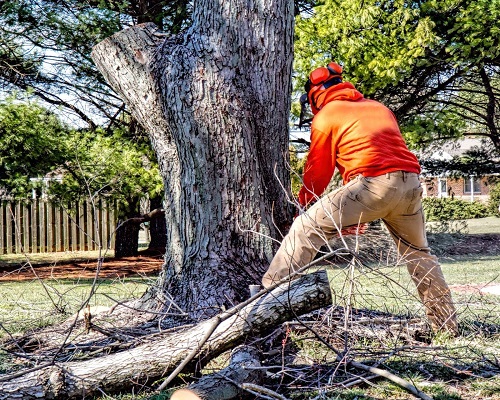Tree removal can significantly alter your garden's landscape, leading to a cascade of changes that may initially seem daunting. When a tree is removed, whether due to disease, safety concerns, or aesthetic reasons, it leaves behind both challenges and opportunities for garden management. It's crucial to address these changes to restore balance within your garden ecosystem. By taking proactive steps, you can maintain and even enhance your garden's beauty and health. However, managing a garden post-tree removal isn't always straightforward, especially if root systems and existing plant life are involved. Let's explore how to effectively manage your garden after a tree has been removed.
Assessing the Impact of Tree Removal on Your Garden
When a tree is removed, one of the immediate changes is the alteration in shade levels. Areas previously shaded may now become sun-drenched, affecting the plants that relied on the tree's shadow. Soil composition is another factor to consider, as the tree's roots would have played a part in nutrient uptake and soil structure. Without the tree, there might be an increase in available water and nutrients, presenting new planting opportunities.
Additionally, any leftover debris, like tree stumps or roots, can hinder new growth. It’s important to assess these elements and decide what to do with the tree stump to maintain a smooth gardening process. Evaluating the spatial changes could highlight fresh possibilities for planting, creating a chance to redesign your garden to better suit your needs and desires.
Soil Rehabilitation and Restoration
After tree removal, attention should be given to enhancing soil fertility. This involves techniques such as soil testing to identify nutrient deficiencies. Once you've identified the soil's needs, you can amend it with the appropriate materials, like compost, to boost its health. Soil compaction is another common issue, often exacerbated by heavy machinery used during tree removal. Aerating the soil can alleviate compaction, allowing new plant roots to penetrate soil layers more easily.
Incorporating organic matter like mulch or leaf litter can greatly improve soil health by breaking down and enriching it over time. This not only aids plant growth but also enhances water retention and drainage, ensuring your garden thrives even after the loss of a tree.
Choosing the Right Plants for Optimal Growth
Selecting suitable plants for your altered garden conditions is essential for fostering a thriving landscape. New conditions might mean more sunlight, so opting for sun-loving plants can be beneficial. It's wise to consider the eventual height of chosen plants to ensure they won't outgrow the available space or once again block sunlight to other garden areas.
Incorporating native plants can be a smart move, as they're well-adapted to local conditions and require less maintenance. Furthermore, their deep root systems help stabilise soil, promoting overall garden health. Planning your planting around seasonal guidelines ensures that your garden provides interest and beauty throughout the year.
Creating a New Landscape Design
Reimagining your garden's layout after a tree has been removed can be an exciting venture. Begin by sketching a new design that incorporates garden structures like pergolas or trellises to add height and visual interest. Pathways and water features not only enhance the garden's beauty but also improve functionality, guiding visitors seamlessly through the space.
Consider plant groupings that offer seasonal colour and texture variations. A well-balanced design accounts for spatial arrangements and the interplay between various elements, creating a harmonious garden that remains appealing all year round.
Maintaining Garden Health and Preventing Future Issues
Regular garden maintenance ensures your garden remains in peak condition. This includes routine tasks such as pruning, weeding, and monitoring pest levels, as tree removal can sometimes lead to an uptick in pest activity. Changes in the environment may attract new pests, requiring vigilant observation and timely intervention to prevent damage.
Sustainable practices like efficient watering and mulching play vital roles in garden maintenance. Mulching helps retain soil moisture and suppress weeds, while proper watering routines ensure plants receive the hydration they need without over-saturating the soil. If you plan on planting new trees, consider their compatibility with existing garden elements to avoid future complications.
Conclusion
Effectively managing your garden after tree removal is key to maintaining a healthy and beautiful landscape. By understanding the implications of tree removal and taking steps to rehabilitate the soil, select appropriate plants, and reimagine your garden design, you can embrace the new opportunities it presents. Sustainability should remain a priority, ensuring your garden thrives for years to come. So, why not start your garden transformation today? With careful planning and dedication, you'll enjoy a flourishing and vibrant garden that brings a sense of satisfaction and joy.


































